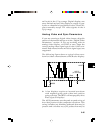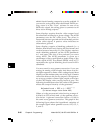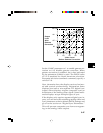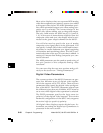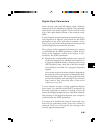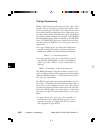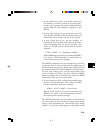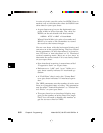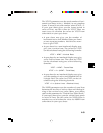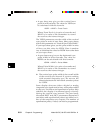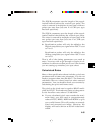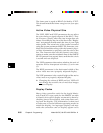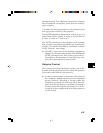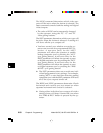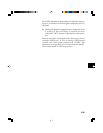
6-52 Chapter 6: Programming
Model 801GC, 801GF & 801GX¥Rev. A
in units of pixels, use this value for HSPW. Here is
another way to calculate the value for HSPW from
other data on your spec sheet:
• A spec sheet may give you the horizontal sync
pulse width in micro-seconds. The value for
HSPW can be calculated with this formula:
HSPW = HTOT x HRAT x Pulse Width
Where Pulse Width is in units of seconds and
HRAT is in units of Hz. Remember to round
the result to the nearest integer.
We are now done with the horizontal timing and
can move on to the vertical timing. The first vertical
timing parameter, SCAN, determines if a given for-
mat will have a non-interlaced or 2:1 interlaced
vertical scanning mode. Here are a few ways to
determine the correct mode if it is not clearly stated
on your spec sheet.
• Non-interlaced scanning is sometimes called
“Progressive Scan” on a spec sheet.
• References to “odd” and “even” fields on a
spec sheet usually indicate 2:1 interlaced op-
eration.
• A “Field Rate” that is twice the “Frame Rate”
on a spec sheet indicates 2:1 interlaced opera-
tion.
The VRES parameter sets the number of active scan
lines in a complete frame of video. This parameter
may be called “Vertical Resolution” or “Vertical Ac-
tive Pixels” on your spec sheet.
• The spec sheet for an interlaced display may
give you the number of active lines for a single
field. You will need to double this number to
get the correct value for VRES.




